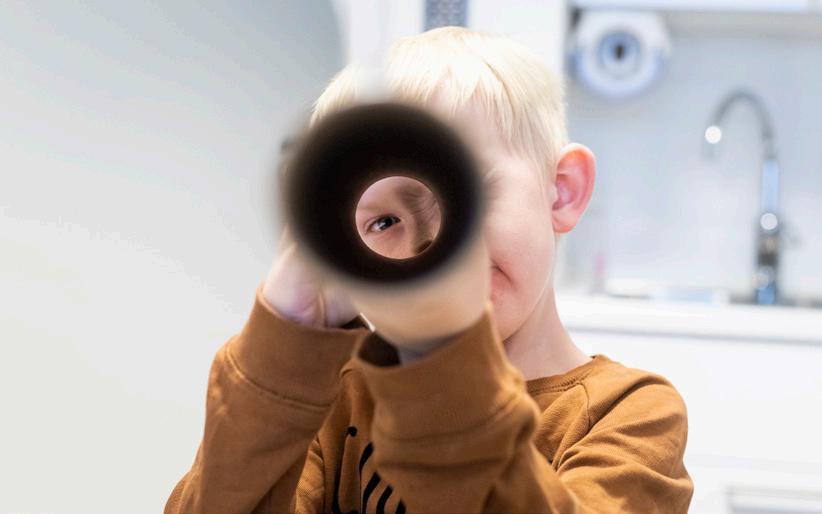
1 minute read
SIMPLICITY - IMPORTANT FOR THE FUTURE
One explanation for why the Star-Spotting Experiment’s method worked well is that no special equipment is needed to participate - everything you need can be found home or at school. This means that lots of people can participate. The more observations you have upon which to base your analyses and conclusions, the greater the accuracy and the more confident you can be that the data you have collected shows the real picture.
Collecting lots of observations proved difficult. Going out in the evening when it is dark (and perhaps cold) is not always so fun. Pupils who were given the task as homework may not have been so motivated. However, Image 28. Scouts with their selfin some places, particularly in the far north of Sweden constructed star-spotting tubes. where it gets dark early, observations could be made Photo: Sollentuna North Scout by a class during school time. In scout groups, on the Group’s Facebook group. other hand, the project was much appreciated, as groups normally meet after school, and outdoor activities are something they are used to doing. In addition, it provided an opportunity to talk about points of the compass and how to use one.
Image 29. Photo taken at European Researchers’ Night 2019 in Borlänge, Sweden, where visitors could construct their own star-spotting tubes. Photo: Henrik Hansson

If the method had been simpler, with fewer steps to follow, more people would probably have taken part. We would have received more observations and had more data to use in our analysis. But because everyone followed the same steps and did exactly the same, the data was sufficiently reliable to allow comparisons and conclusions to be made. When doing research, the process needs to be a little tricky in order to get reliable results.
The method used to measure light pollution in the Star-Spotting Experiment was deliberately developed to ensure that anyone could participate and measure light pollution. Simplicity was a key focus of the research project. By using scientific methods, we could test whether such a simple method (using a cardboard tube to count how many stars you can see with the naked eye in the night sky) is a reliable way to measure light pollution. The results show that this is the case.









